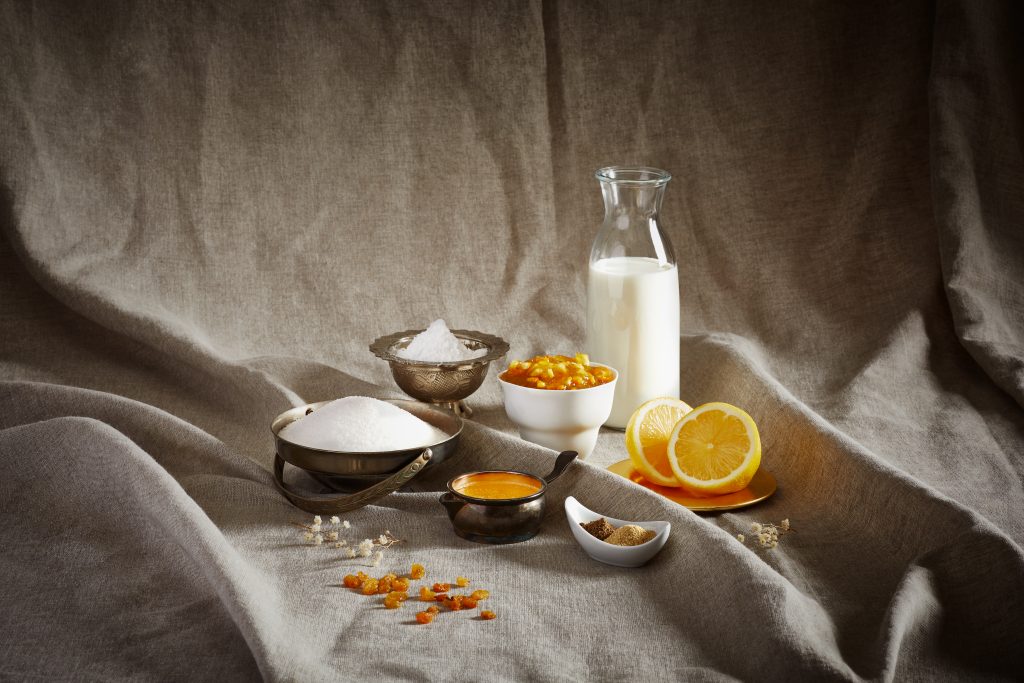It is not clear why this soft, melt-in-the-mouth holiday cake is called baba, which is a word of Slavic origin. In all Slavic languages, baba – or the diminutive babka – means an elderly woman. It is thought that perhaps the metal baking tin that gave it its shape resembled a floor-length woman’s skirt.

There’s a reason why this is considered a holiday cake – in the 19th-century recipes penned by Jan Szyttler, chef to the nobility in Vilnius, the batter calls for 24 or even 30 egg yolks. According to Antanas Astrauskas, in the recipe books published in Vilnius in the 19th century, šakotis – the traditional Lithuanian spit cake – was also considered a baba and was called baba on a spit, since 60 eggs were usually used for its batter. Back then, the home of every wealthy person in Vilnius smelled of babas baking before Easter, and during the interwar period, confectioneries and bakeries were already offering this centrepiece of the holiday table.
You will need:
For the batter:
- 5 L wheat flour (very finely ground)
- 50 g fresh yeast
- 5 L whole milk (preferably unpasteurised)
- salt
- 2 egg yolks
- pinch of ground cardamom
- pinch of ground nutmeg
- zest of 1 lemon
- 250 ml sugar
- 250 ml soft melted butter
- 200 g seedless raisins
- 100 g mixed peel (candied lemon and orange peel), chopped
- pinch of saffron (optional)
- 1 tbsp. butter for greasing
For the glaze:
- 1 L icing sugar
- 2 lemons
- pinch of saffron (optional)
Method:
- Soak the raisins in water and drain.
- Heat the milk to 40°C and keep warm. Pour 250 ml of the milk into a small bowl and dissolve the yeast in it, then add a tablespoon of flour. Cover everything with a towel and wait at least 10-15 minutes, until the liquid begins to foam.
- Mix the proofed yeast with the flour and a pinch of salt in a large bowl. Cover the mixture with a towel, put it in a warm place, and wait for the batter to rise. Then whisk the egg yolks with the remaining milk and add to the batter along with the cardamom, nutmeg and grated lemon peel. Mix well with a wooden spoon, then add the sugar and the butter and mix until combined. Finally, add the raisins and the mixed peel and combine (a food processor would speed up the process). If you would like the cake to have a more yellow colour, you can add a pinch of saffron mixed in a spoonful of milk to the batter.
- Leave the batter in a warm place and wait for it to rise to double its size. Stir it one last time and pour it into a greased baking tin. Bake for 90 minutes at 180°C.
- Prepare the glaze: mix the icing sugar with the lemon juice (and a pinch of saffron if you want more colour) until smooth. Pour the glaze on the warm baba in parts, waiting for it to set before adding a new layer.
Note: The amount of glaze you use depends on the surface area of the baba and personal preference.
This information was shared by Antanas Astrauskas.
